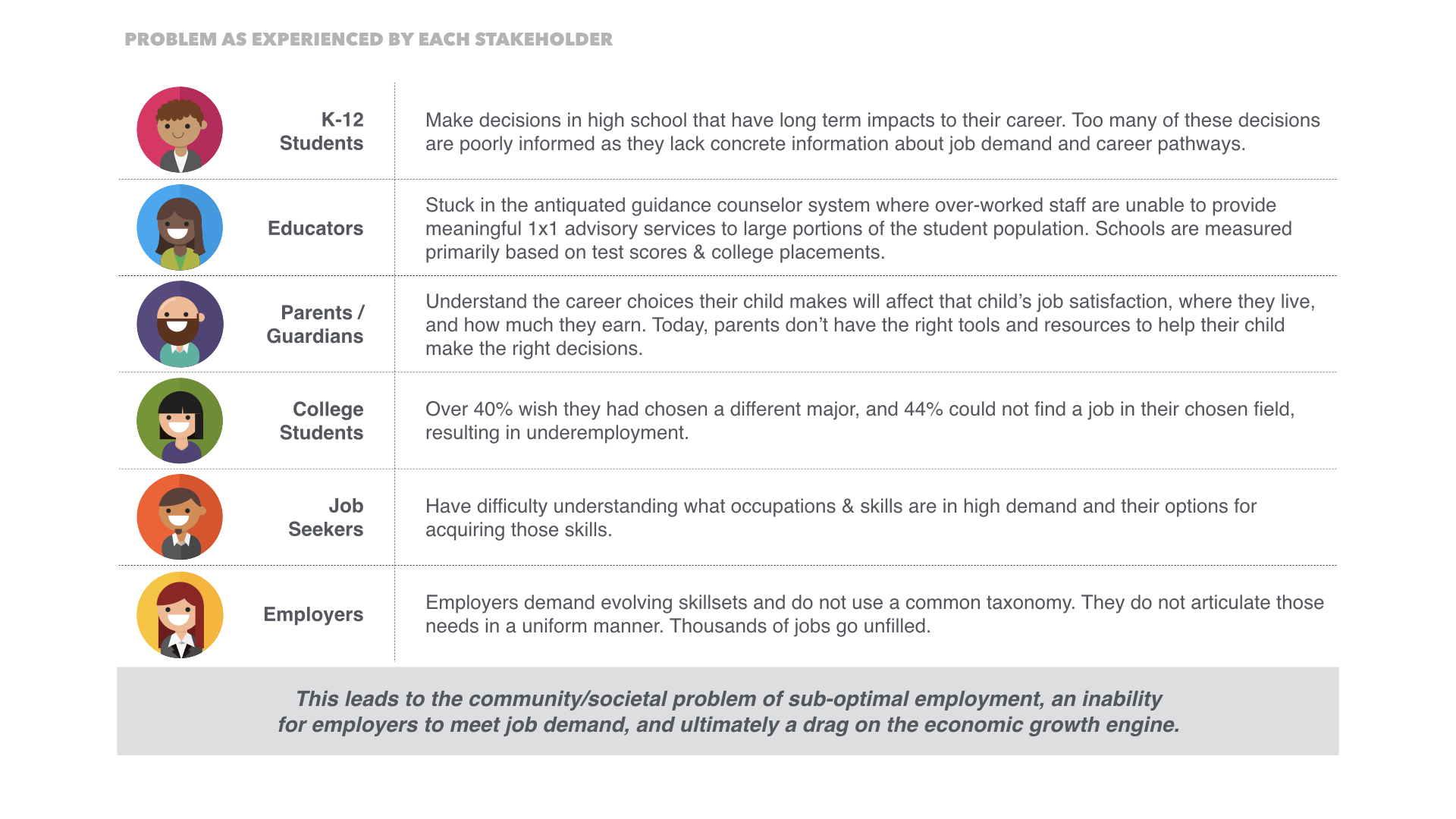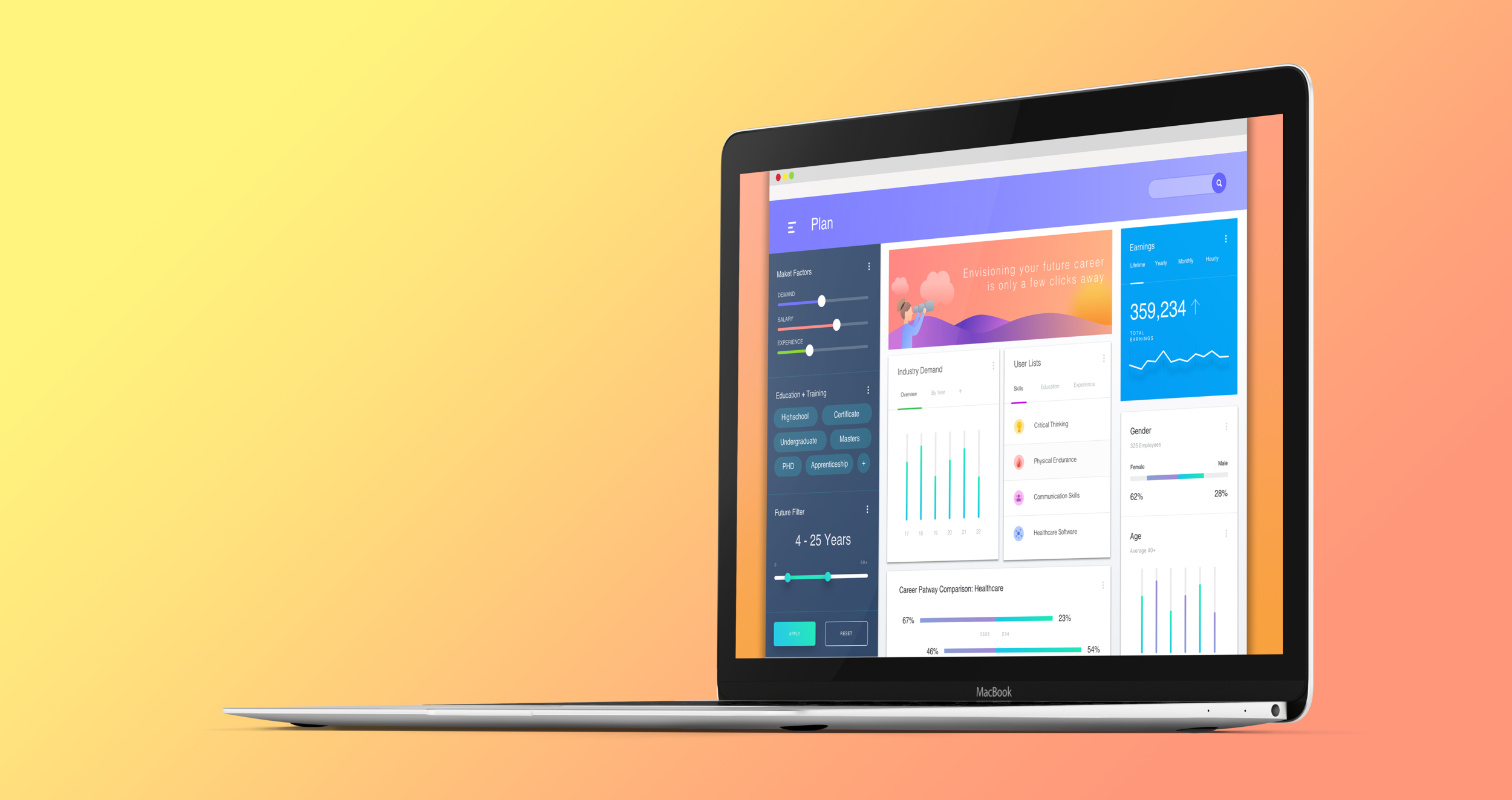
PATH

PATH | For Students
A digital workforce development hub created in partnership with the Allegheny Conference Workforce Development Taskforce.
PROJECT OVERVIEW | I am currently the design and research lead on this project. This is an ongoing engagement that I am working on in partnership with the Allegheny Conference workforce development team and PNC's CEO. The impetus for this work is summarized below in the Problem Summary section.
PROBLEM SUMMARY |
- There is a mismatch between the evolving demands of our regional job market and the skillsets being acquired by our labor force
- People often make decisions about education and careers using limited, semi-random information
- This ultimately leads to sub-optimal employment, where people often regret education decisions and miss out on jobs that would be a ‘better fit’ for them
- Employers are constantly creating positions with evolving terminology & skills needed, making it difficult to find workers with required skills
- Teachers, parents, & guidance counselors are unable to stay current with jobs trends and struggle to connect students to clear resources for making data-driven decisions
This problem is not unique to western PA. Many regions in economic transition within the US experience the same challenges. We want to target the fundamental dynamics of this issue by providing an easy to use, engaging, and data-driven set of tools that illuminate opportunities in the current and future job market. Our objective is to equip job seekers and job dreamers with the tools and information needed to acquire in demand skills and find optimal employment. We started by looking at this problem through the eyes of each stakeholder.

PRELIMINARY RESEARCH + FINDINGS |

The labor market is a match between jobs available from employers and workers to fill those jobs. Some workers are ‘optimally employed*’ but many are in sub-optimal jobs or unemployed.
Our hypothesis is that one cause for this sub-optimal matching is that people make unstructured decisions about education and careers due to a lack of information about career options & educational pathways (how you get from here to there and where you may go once you get there).
We began our research by focusing on a student user group that is on the cusp of making critical educational & career decisions.
Students in grades 10-12 are in what we call the “critical frame” of their life journey because they are on the verge of making major life decisions.
Through conducting qualitative research with 40+ 9th-12th graders, we were able to probe further into the dynamics of their decision making process and painpoints. The most prevalent issue being that they only have access to a limited set of information when making education & career decisions, resulting in unstructured actions with unintended consequences.
KEY INSIGHT ABOUT STUDENTS |
Students are struggling to understand themselves early enough. At the time of critical decision making, their awareness of self is fairly shallow and primarily shaped by their immediate surroundings (family, peers and experiences).
Decisions and actions are based on partial and distorted data. Decisions are commonly being made based on gut instincts, misleading (outdated and/or incomplete) data, and a student’s personal or shared experiences.
Pathways are not being identified and/or explored throughly. Although most students are able to articulate a “dream job”, they do limited exploration of alternatives and lack the ability or motivation to identify the pathway(s) to get there.
PATH PRODUCT CONCEPT |





CURRENT STATE STORY BOARD |

FUTURE STATE STORYBOARD |

EARLY PRODUCT WIREFRAMES |
